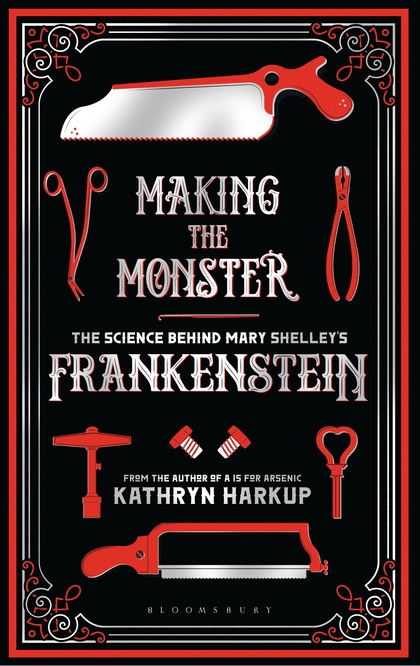
Making the Monster - The Science Behind Mary Shelley's Frankenstein
By Kathryn Harkup
Published 2018 by Bloomsbury Sigma
ISBN 978-1-4729-3373-7
To understand how Mary pieced together her creation it is worth spending a little time looking at the political, social and scientific would that she grew up in as well as the people and experiences that made their way into the novel. The ideas and concepts explored in Frankenstein - science, life, responsibility - were at the forefront of philosophical and public debate in the century preceding the book's publication. There were many other influences from Mary's childhood that will be explored in subsequent chapters before we look at the scientific aspects of the novel and the character of Victor Frankenstein in detail.
I have sold out in a big way! This is the first review where I was sent a gratis copy by the publisher in the hopes that I would publish something about it on my blog. They must have liked my review of A is for Arsenic by the same author. Please understand that I am infinitely corruptible and if anyone else wants to snd me free stuff my contact details are available on the index page.
It is two hundred years since Mary Shelly published Frankenstein; or, The Modern Prometheus anonymously. The book has cast a huge shadow over popular culture in the intervening centuries, almost immediately becoming both an intellectual discussion point and the source of countless plays, films, parodies, and rip-offs. Shelly was 20 at the time of publication.
Making the Monster contains a quick whirlwind tour around European science and philosophy as it was at the start of the 19th century before settling on Shelley's formative years, trying to find where she might have been influenced by her unusual upbringing.
Many chapters of Making the Monster are devoted to Shelley's travels through Europe with her lover (a later husband, Percy Shelley) and Lord Byron, a scandalous group that would the Kardashians to shameLord Byron was basically who Kanye West pictures himself as. Famously, Frankenstein was the result of a writing competition amongst the group during the dreary 1816 summer - the event is very well documented since everyone involved were the types to keep extensive diaries, but writing the book was only a small part of Shelley's life between the ages of 18 and 20.
Unfortunately I was disappointed in the chapters discussing Shelley's place in history. The young woman chose a tumultuous lifestyle beset with tragedy worthy of a dozen supermarket tabloid covers but Making the Monster holds its subject at a dispassionate arms length. Shelley must have been a remarkable person but I never got the sense that I understood where she was coming from.
Harkup is on much firmer ground discussing the science behind Frankenstein's creation. There are many interesting passages detailing how the creature was created (something that is left pretty vague in the novel), what was the prevailing medical wisdom at the time, and how science has progressed in the meantime. There is even some speculation on how such a feat might be achieved today should anyone wish to try; spoiler alert, it won't be easy.
I enjoyed reading Making the Monster but I found it frustratingly slight given the subject matter. It makes for a breezy summer read but both Frankenstein and Shelley herself could stand a more thorough treatment. The original novel is such a dense mixture of horror, sadness, philosophy, and literary allusions that a brisk tour does not really do it justice, something highlighted by the brief quotes from the original text that begin each chapter.
In conclusion, Making the Monster is perfectly fine but uninspired.